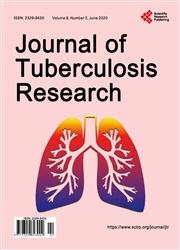Knowledge on tuberculosis, services of TB control programme and associated socio-demographic inequity among rural participants of Jaipur, Rajasthan, India: A cross sectional study
引用次数: 0
Abstract
Introduction: Tuberculosis (TB) is one of the top 10 causes of deaths worldwide. India is still a highest TB burden country. There is scarcity of data on TB knowledge from Rajasthan state of India. Materials & Methods: Cross-sectional community based study was carried out at Model Rural Health Research Unit, Jaipur, an unit of Department of Health Research, Ministry of Health & Family Welfare, Government of India. Results: Study reports the result from 1993 adult participants from 10 villages of 2 sub-districts of district Jaipur. About 88.9% of studied participants knew that TB is an infectious disease and it spreads from TB patient to healthy person in close contact. Only 22.3% of participants knew DOTS is the name of treatment for TB. While, only 58.9% knew sputum is used for diagnosis of TB at health centres. Scheduled castes, scheduled tribes and backward classes social groups knew less than the mainstream General social group. The observed difference was statistically significant (p<0.05). Logistic regression analysis estimated the relative contribution in knowledge status. Discussion: The knowledge of study participants on transmission of tuberculosis was similar to the knowledge of population in country wide study. They poorly knew that sputum is used for diagnosing the tuberculosis disease; socio-demographic inequity exists in this knowledge too. People from older age groups, underprivileged social groups and minority need extra educational activities.印度拉贾斯坦邦斋浦尔农村参与者的结核病知识、结核病控制规划服务和相关的社会人口不平等:一项横断面研究
前言:结核病(TB)是全世界十大死亡原因之一。印度仍然是结核病负担最高的国家。来自印度拉贾斯坦邦的结核病知识数据匮乏。材料与方法:在印度政府卫生与家庭福利部卫生研究司下属的斋浦尔模范农村卫生研究单位开展了基于社区的横断面研究。结果:研究报告了斋浦尔2个街道10个村庄的1993名成年人的调查结果。约88.9%的研究参与者知道结核病是一种传染病,并由结核病患者传播给密切接触的健康人。只有22.3%的参与者知道DOTS是结核病治疗的名称。而只有58.9%的人知道在卫生中心使用痰液诊断结核病。排期种姓、排期部落和落后阶级社会群体比一般主流社会群体了解得少。差异有统计学意义(p<0.05)。Logistic回归分析估计了知识状态的相对贡献。讨论:研究参与者对结核病传播的知识与全国范围内研究人群的知识相似。他们对痰液用于诊断结核病知之甚少;这方面的知识也存在社会人口不平等。老年人、社会弱势群体和少数民族需要额外的教育活动。
本文章由计算机程序翻译,如有差异,请以英文原文为准。
求助全文
约1分钟内获得全文
求助全文

 求助内容:
求助内容: 应助结果提醒方式:
应助结果提醒方式:


